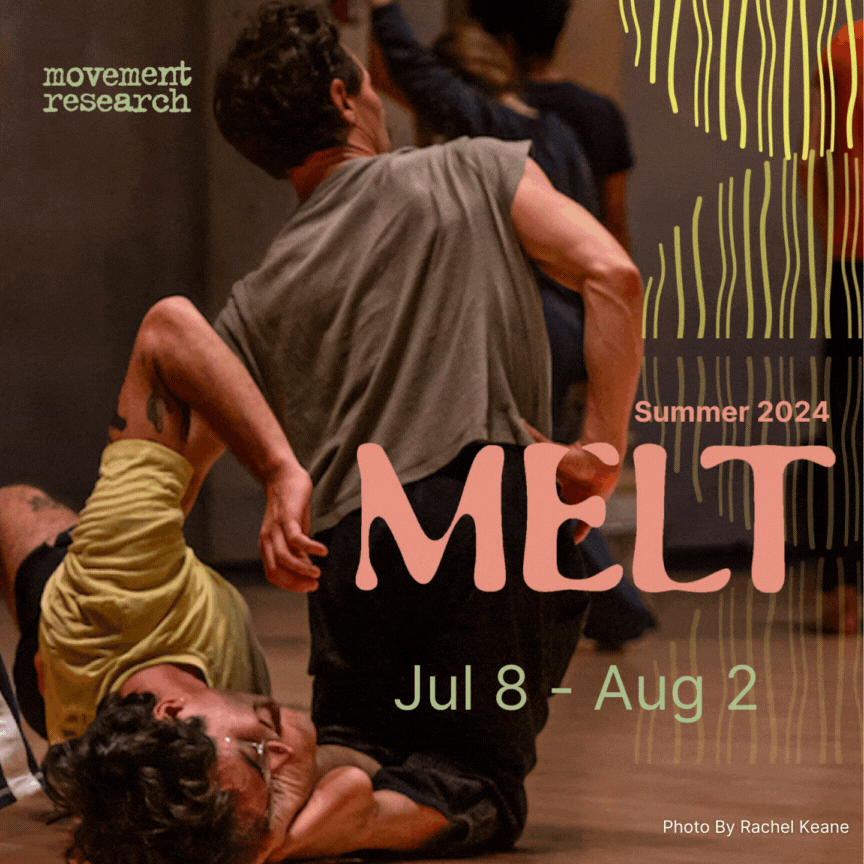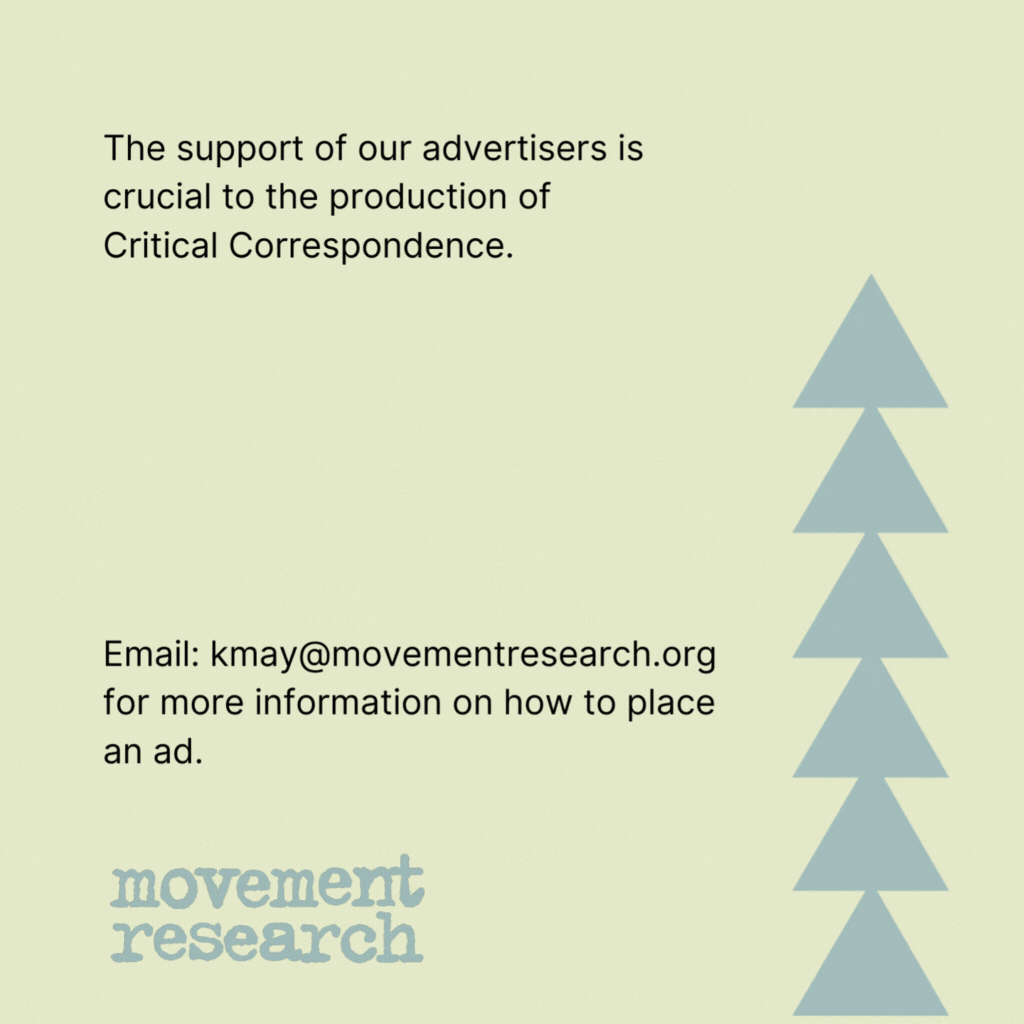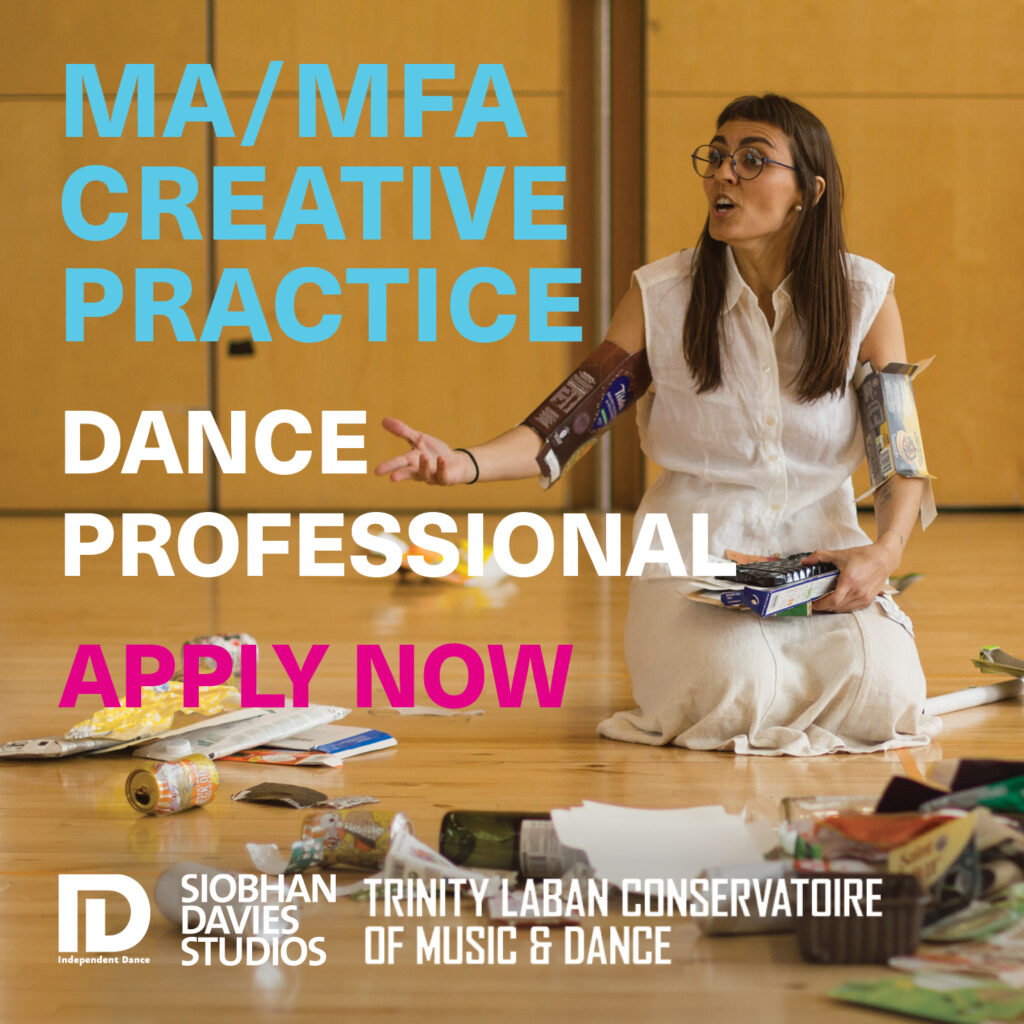Interview date: July 23, 2012 (in the BAM attic)
Download a PDF of this conversation
Nora Chipaumire is a Zimbabwean choreographer, dancer and director who has toured extensively through North America, Africa, and Europe. She speaks with Jaamil Kosoko about traditional versus contemporary modes of creation, questions around gender in contemporary dance in Africa, biculturalism, and her numerous international collaborations. Chipaumire is a graduate of the University of Zimbabwe’s School of Law and holds graduate degrees in dance (M.A.) and choreography and performance (M.F.A.) from Mills College.
Jaamil: I’d like to talk a little bit abut your recent trip to Africa as a result of The Suitcase Fund, could you talk about that program, what you were doing, and the itinerary of activities while you were on the continent?
Nora: Yes, I’m just one day back and still kind of in it. I was in Dakar, Senegal and Kinshasa, Congo, and Burkina Faso¦ Three French-speaking African countries.
Jaamil: Do you speak French at all?
Nora: I speak pedestrian French, enough to get by, so it wasn’t bad¦ In Senegal, I was researching a potential project, a theatre project that I would like to do. We are in our very preliminary phase, just having conversations to see what we could possibly do, and also looking at a lot of dance.
In Congo, I was observing a contemporary African dance festival, a platform put together by a Belgian organization, a “who’s who” of contemporary African dance, all male. I was the only African woman choreographer at the festival, but not showing work, just observing…it was interesting to be in the mix of the people but not performing. The work was absolutely phenomenal: I would say actually it left me feeling that one need not apologize about Africa, or feel pity, because it is so strong, as strong as anything you can see in the world. It was really satisfying to come away feeling that I am part of that.
In Burkina I was teaching women who were walking into contemporary dance, very much beginning contemporary dancers… It was a conversation about what separates that, what makes it contemporary.
Jaamil: Do you find often that men sort of dominate the contemporary scene in Africa? Certainly that is a concern in America…
Nora: It was a huge concern in the conversations that people were having in Kinshasa, the absence of female choreographers and female dancers. There were only two women dancers in the total of the festival, performing in other people’s work, so it was a conversation, but also a very interesting issue came up in talking about contemporary African dance, and the politics of the African body, of the Black body, and most of the male choreographers. Their opinion is that the African body is essentially a feminized body anyway, so you know, it raises all kinds of exciting, interesting questions…
Marginalization, the question of where does that leave the biological female body, of those who are biologically female who create in this extremely marginalized world. I do think that there are a lot of powerful women in dance as well as in the Americas, maybe not involved directly with performing and creating, but with administration, schools, that sort of thing. So, I think one needs to give a sort of measured answer to the problem of women in dance.
Jaamil: Going back to this idea of traditional versus contemporary, this conversation you were having amongst other women when you were teaching; did you come to a realization?
Nora: Well, I have my personal beliefs and opinions, which I really tried to share vigorously, because I had to consider it rather strongly, working here… People know I was born and raised in Zimbabwe, so there is an assumption that what I am doing is or should be traditional. So for me it is also the process by which you arrive at the work that makes it contemporary, not traditional.
Jaamil: So bringing into the conversation the kinds of strategies that you’re using to create which essentially determines the outcome and labels it as contemporary and/or traditional.
Nora: You could be using language that could be read as traditional; in fact I ended up creating a piece which most people read as traditional, but it wasn’t in the true sense… The form of it looked as if it was [traditional] but the process of arriving at and recreating a traditional idea is in itself contemporary.
Jaamil: Wow.
Nora: That to me has given me a lot of freedom to do what I do because then I can work with language that is accessible, deemed traditional in some sense but is still about personal expression, still about me trying to say something outside of this traditional canon.

Jaamil: I’ve read in interviews you talking about having a very bicultural perspective, or being self-exiled or “othered,” and I’m sure all of that plays a role in your creative process. I’m wondering if you could talk about how those dueling forces help you create?
Nora: They’re not dueling in the sense of having a duel; they are entities that have found a way to cohabitate happily inside of my body. I don’t find them necessarily a contradiction. I think it is helpful to explain to people that I am bicultural, bilingual, bi-history, but that doesn’t make me a schizophrenic person. I am pretty clear about all of these things playing a role in my being; that is the truth about a colonized body. I grew up under this colonial regime, having been educated in a very Western way on the continent of Africa because Zimbabwe was a British colony. All the education was British, which is why I speak English…so the ability to consume all things Western and all things African at the same time to me is not a contradiction because it has been part of my reality since I was born.
So, yes, I actually make no apology for this because I did not create this situation, but I want to be able to take advantage of the things that I know: I am able to read Chaucer and NgÅ©gÄ© wa Thiong’o. There is no contradiction to be able to inhabit both of these worlds, so I do try to bring in elements of whatever the piece needs. If it needs a tendu or if it needs an isolation they are able to cohabitate in the piece. That is my reality.
Jaamil: How do you extract what a work might need? Do you have a process for knowing that?
Nora: Let me say I do a lot of research; I read and read, I research images, philosophy, all kinds of things, ever since I began working on Miriam, to give a concrete example. Miriam started off as a way for me to try to respond to the death of Miriam Makeba, and I was really struck by the fact that she died; I was like “Whoa, wait a minute…” If you hear that Mandela is dead, thank God he is not, its sort of an institutional loss; you don’t believe that they are going to disappear.
Makeba was a sort of institution, and we suddenly realized that she is human and could die and then she did die…I was feeling sad and remorseful, and realizing that this woman lived thirty years in exile, so I did have some questions. I’m always curious about powerful women, how they sustain, because it is not easy even being an ordinary person, and clearly for people with statures like Makeba and the political willpower to take on such major issues as apartheid, and human rights on top of her creative career…how does one woman do that? I was very curious about she could, in Africa, have this sustained, lifelong career. She was popular for so long. Her career went in and out but she stayed for a very long period of time, so it started there but there is still this question of how a woman sustains and maintains this ability to create. Other Miriams, like the Virgin Mary, bear the burden of responsibility and the iconic status of woman as an icon, that you have to carry the status of woman as responsible for such major things. And then to think of woman as Africa…so it started to veer away from just the life of Miriam Makeba.
I was researching all kinds of stories about Virgin Mary, prayers, and including also my own reality as having to choose to be outside of my home country and what does that mean, what has it meant, how does it feel? Trying to make myself complicit, implicate myself in the work that I’m creating, and I feel like that’s one thing that I always do in the end: implicate myself. Essentially the work starts as a solo, and then, of course, it kind of grows up. It is something that I am interested in: this idea of being exiled and creating and how to sustain a creative presence in the responsibility of coming from this other place…. So a lot of reading and I also try, if I can, to travel. I did travel to South Africa because I wanted to visit Soweto and Johannesburg, a place where Makeba came from to try to understand what it was that she left behind.
Jaamil: What would you say she left? Were you able to get artifacts or any sort of dramaturgy?
Nora: Dramaturgy may be closer; the spirit, I think, for anyone who has lived for many years, or who has grown up in Africa- the spirit is something intangible that you leave. In her case it wasn’t by choice, so I can only imagine how she must have had to negotiate that daily. For myself it was a choice, so the pain and the joy I have to contend with, I contend with by choice. I think I could understand the spirit, but South Africa is such a complicated place. There is this feeling of power, of groundedness, timelessness…at the same time what she was leaving behind was segregation and dehumanization, so it’s a complicated question when it comes to South Africa.
I was also trying to understand what remains of her spirit, and I was struck by the strange reality that for people like myself who choose to go elsewhere time stands still. And yes, our memories and time are sort of a way to freeze, so the reality there is that people move on. Makeba was special to me, but she wasn’t necessarily special to the everyday people who were leaving in Soweto. It also brings up questions about how we canonize people, ideas…
Jaamil: speaking about Miriam and the design aspect and bringing into focus some of your collaborators, this work has quite an international team. Starting as a solo, can you talking about that process of bringing in the collaborators?
Nora: After a while of reading, trying to write, I have a writing process that I do always for each piece, and realizing that the piece was going in a direction where I felt I needed more information than I had, initially I started thinking I needed a dramaturge, someone to help me write. I thought I wanted to write a script first, so I scripted everything out and the dramaturgy didn’t quite work out so then I ended up with a director. Theatre director Eric Ting came in during the latter part of the piece. I was sort of unsure how I as a choreographer would have a director, its still a question that comes up often, what is that negotiation of being a choreographer and having a director?
And then the sound question was so strong for me. I needed to come up with a very strong answer of what to do about the sound, because Makeba was a singer and her expression was an aural expression. I have been working with Omar Sosa, who is a very reputable Afro-Cuban musician. Omar was intriguing to me because Makeba worked with such a variety of musicians especially in South Africa. She had to work with musicians not coming from the same background. I think it was part of her genius, part of her international success, and I wanted to honor that way of working that she had, so Omar Sosa I had worked with before, he is based in Barcelona and he was available to work on the project. He has created his ode to Makeba, essentially, which is extremely beautiful yet at the same time honoring all of our backgrounds; his Afro-Cuban-ness and my Zimbabwean-ness, as well as this piece which happens to be highly conceptual. We asked, “how can we do this very avant-garde, highly conceptual African work?”
My light designer is Olivier Clausse who is French; we had worked with each other before. I like to continue to work with people with whom I feel I have found a common language…a way to see things that is common, not that we come from the same place but that we see space in the same way and we like to use appropriate technology to see the space. He so ably creates and builds lights, not necessarily like “whoa, here’s a space full of light, lets use this and this and this” but asking “what does this piece need?” I am asking as a chorographer “what does this piece need? What kind of instrument is necessary to make this space register?” Its been a very beautiful collaboration with him too.
I am working also with Okwui Okpokwasili , who is New York born and raised but of Nigerian parentage, again someone who has this malleable background of being African and not-African, which brings an interesting tension to the question of being here and there at the same time which, also a through-line in the piece. The costume designer is a team of two people: one is a French woman who builds structures, so, for example, there are wings in the piece and she also builds a robe using found materials you would see in a township, rubber, plastic, cans, bottles. The other costumer is Naoko Nagata, she is Japanese based in New York.
Jaamil: An eclectic group!
Nora: It is an eclectic group; international, but also reflective of the world I am in and also the world I envision.

Jaamil: I’m noticing a very heavy visual component to not only the work that I’ve seen recently in Miriam, also in The Last Heifer, which I could see in a gallery. I’m noticing such a refined visual performance perspective and point of view, is this a new direction or has this always been a focus in the work?
Nora: I think this has always been the focus. Before dance found me I thought my mode of expression would be through film or photography, so I think this is my way of staying true to that visual impetus. The visual world has always been very present to me and I see choreography as a visual thing. I would say necessarily that I think in pictures, but it is close to choreographing in pictures and those pictures coming to life; not necessarily tableaus, but I am keen on a present world, creating an environment that is visceral. It is very present, its not a digital world. It very much appeals to me that dance is a moving image and to me the whole visual world is part of this moving world, and choreographing that moving world is interesting to me. If its more visible now its maybe because I have more support to realize that vision: it has been wonderful having the little bit of freedom to build the world that I feel the dance belongs in, which I think has always been a privilege of some people…but also, I feel like the materials that I work with aren’t expensive, they are materials that belong to the world.
Jaamil: Thank you so much, Nora, for taking a moment to open your process. Maybe one last question: Do you insert your work in a distinct Feminist category or perspective?
Nora: It’s a fair question because I’m always harping about women, but a more honest answer would be no, I don’t see my work as necessarily Feminist, though I appreciate that it can be read as that. If anything, it is part of this colonized world…Feminist, Colonized, I haven’t quite found a way to separate the woman in me from the where I’ve been or how I’ve been formed, so to call it only feminist would be to somehow negate this other question of the imperialist point of view and the world we’ve inherited from this very debilitating way of seeing the world. I am a product of this very imperialistic, colonized world, not necessarily of the feminist mystique. I would like to place my work in this broader thing and not only to feminist concerns; though I have to say those concerns are also there.
Jaamil Olawale Kosoko is a producer, curator, poet, and performance artist. He is a 2012 Live Arts Brewery Fellow as a part of the Philadelphia Live Arts Festival, a 2011 Fellow as a part of the DeVos Institute of Arts Management at the John F. Kennedy Center for the Performing Arts and an inaugural graduate member of the Institute for Curatorial Practice in Performance (ICPP) at Wesleyan University. He is the Co-Director of anonymous bodies || art collective, a site based visual performance company. Currently, Kosoko is the Producing Associate in Humanities and Engagement at New York Live Arts. He will make his NYC curatorial debut with other.explicit.bodies. at Dance New Amsterdam on Jan. 10 & 11, 2013. Visit www.anonymousbodies.org to learn more.






